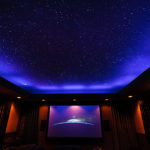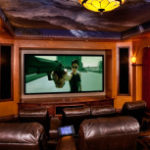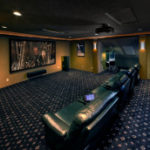A high-quality subwoofer is a critical part of the home theater experience, but it’s also the easiest piece of audio equipment to get entirely wrong. From model choice to placement and installation, it’s possible to spend a lot of money on a sub-par experience (pun intended!), even if you follow one of the countless online how-to guides.
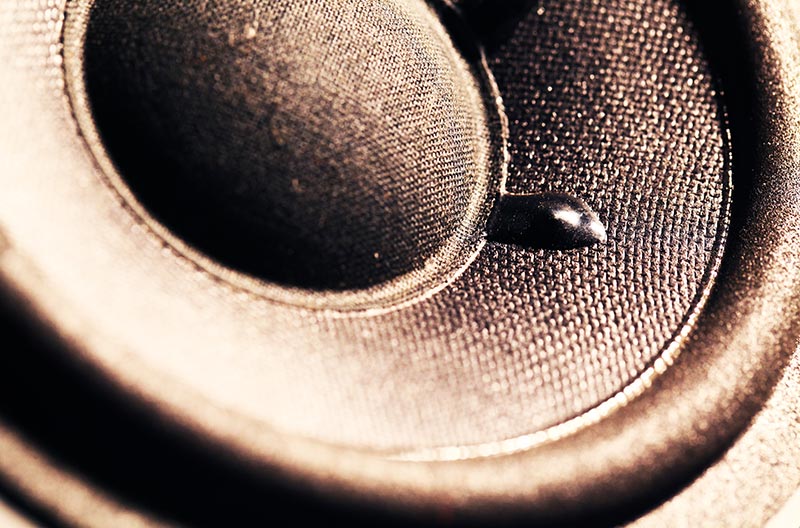
There are many considerations that can impact the placement of sound equipment. Is your home theater being installed in an existing home, or will you be overhauling your living room? Or are you building a custom home with a pre-designated space for your home theater? These are only some of the questions that need to be answered when considering where your audio equipment goes. Having a team of professionals deal with the placement and installation of all your gear, including your home theater subwoofer, guarantees the best possible experience, while also taking a serious workload off your shoulders.
For many audio enthusiasts, aesthetics is an important consideration for any home theater subwoofer
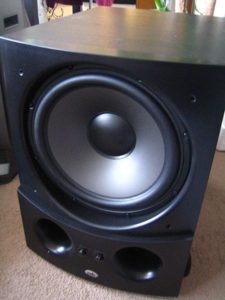
Standalone subwoofers can take up a significant amount of floor space. Something of this size may be too much sub for a smaller room.
Every home theater is different. Some people don’t care if wiring can be seen passing between pieces of equipment or that speakers are visible. As long as they get the absolute best sound and picture quality, they’re happy.
However, many home theater owners prefer a cleaner look, and the market for high-end home theaters is moving towards more ‘hidden’ systems. There are many reasons for this. Floor space is always a concern, especially for home theater spaces that weren’t originally intended for the purpose. If you’re using a wired speaker setup, that can exacerbate space concerns and even present a tripping hazard, a major concern for families with many children potentially running around the home. This is one of many concerns that often leads homeowners to make critical mistakes with how they set up a subwoofer.
Traditionally, a home theater subwoofer is a free-standing box. These are still produced today and are the traditional solution that many homeowners go with. While the best units take up more floor space, they offer better performance.
On the other hand, in-wall, in-floor, and in-ceiling subwoofers have become the go-to choice for many home theater owners. In-wall subs mean one less piece of furniture to worry about on your floor, and the newest systems have comparable performance to some of the best quality free-standing subs. Having in-wall subwoofers and sound speakers can let you design a home theater space for looks and comfort.
What is the difference between passive and powered subwoofers?
When you are choosing your home theater subwoofer, an important thing to consider is whether the unit is “passive” or “powered.”
The basic difference is that a passive subwoofer requires an external amplifier to power them, the same as your other speakers. A powered (also called “active”) subwoofer has the amplifier built in.
Whether you choose in-wall subwoofers or a free-standing subwoofer, this difference is important to consider. In the past, most in-wall subwoofers were passive units, which could complicate installations, requiring a specialized in-wall rack where the sub would be mounted along with its amp, which would then be connected to a receiver central to your home theater. For some clients, we’ve installed the Paradigm RVC-12SQ in-wall subwoofer, which is rated to work with their X-300 and X-850 amplifiers.
Many newer in-wall subwoofers are powered units. We have provided clients with JL Audio’s Fathom series of in-wall subs, in addition to their Fathom in-ceiling units.
Professional installers can ensure you get the most out of your home theater, no matter how much you’ve spent on it
For many home theater enthusiasts who are willing to purchase expensive high-end subwoofers, “eyeballing” the placement after hours of trial and error isn’t always an option on the table.
For those who are considering adding in-wall units to an existing home theater, placement becomes an even greater challenge thanks to a more complex installation process. Properly and safely mounting a subwoofer can be real work, and a single mistake can be costly to fix.
Professional installers take the hassle and guesswork out of setting up and installing a home theater system. When it comes to subwoofers, some of the greatest advantages of professional installation includes:
- Proper Subwoofer Placement: Where your subwoofer(s) go can depend greatly on the size and shape of your home theater, the placement of other equipment, and furniture arrangements. If your home is currently under construction, Valley Home Theater can design the space as it’s being built, including installation of in-wall sub enclosures before drywall is installed. If you’re adding to an existing home theater, we can determine the optimal placement for a new subwoofer without disrupting the rest of the room’s layout.
- Quality Bass: Regardless of the subwoofer you have chosen, if it’s not in the right place or doesn’t have the right amp to power it, even the best equipment will fail to do the job. When an existing room is being converted into a home theater, we run a battery of tests on the space that allow us to determine the best location for all your audio equipment, including your subwoofers.
- Clean and Safe Wiring: We have all seen tangles of wires stuffed behind entertainment centers, and maybe we’ve even been the victim of loose cables strung lengthwise across a room. Professional installers understand the importance of cable management, so your in-wall or standalone home theater subwoofer, speakers, amps, television, and everything else will be connected with the wires out of the way and well organized.
- Ease of Maintenance: With everything properly organized, it’s easier to isolate a problematic piece of equipment for replacement, repair, or upgrade.
- The Right Subs for the Home Theater: Your choice of subwoofer depends on the purpose of your home theater. A 12-inch subwoofer might be the best solution if you’re intending to watch movies with friends and family, or if you want your videogames to really shake the house. But a smaller unit (or multiple units) might be better if music is your passion. Professional installers can help inform your purchase decisions, so that when you spend money on equipment, you can be sure you’re getting what’s right for your theater.










